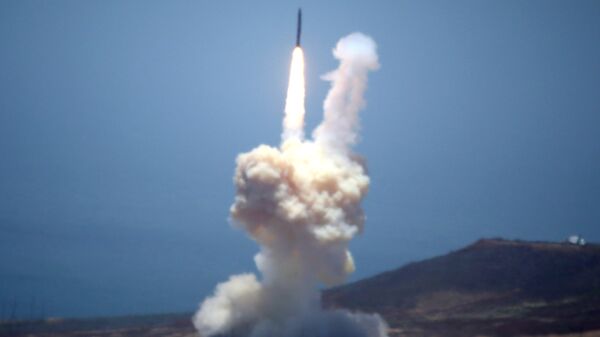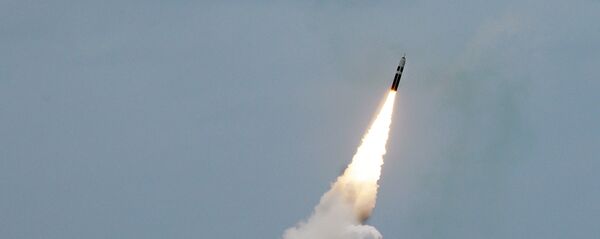On Tuesday, the US Air Force successfully carried out the first live-fire test of its Ground-based Midcourse Defense (GMD) system, intercepting an intercontinental ballistic missile (ICBM) target over the Pacific Ocean.
"This system is vitally important to the defense of our homeland, and this test demonstrates that we have a capable, credible deterrent against a very real threat," Vice Admiral Jim Syring, the director of the Missile Defense Agency, said in an official statement.
During the test, the target was launched from the Reagan Test Site on Kwajalein Atoll in the Republic of the Marshall Islands. The target was tracked by the Command, Control, Battle Management and Communication (C2BMC) system and the Sea-Based X-band radar, positioned in the Pacific Ocean. Then the target tracking data was transferred to the GMD system that intercepted the ICBM-class target.
While Reuters called the test a "major milestone for a program meant to defend against a mounting North Korean threat," Murakhovsky believes that it was not actually aimed at deterring Pyongyang in the first place.
The expert explained that the first phase of the program envisions the deployment of 50 interceptors with a kinetic warhead, capable of intercepting a total of 10 intercontinental ballistic missiles (ICBMs). According to Murakhovsky, the Pentagon hopes to accomplish this task by 2021.
At the same time, however, the military expert threw the efficiency of the GMD into doubt: he believes that the investments poured by Washington into the development of the system do not correspond to its actual ability to intercept ICBM-class targets.
"It is possible to shoot down up to 10 ICBMs simultaneously in theory only," Murakhovsky said. "If one looks at yesterday's test one should keep in mind that it was conducted on a test track [under controlled conditions]: it was known which missile would fly and where from, so they were prepared for it in advance, which never happens in a real combat."
It appears that University of Pittsburgh professor of international relations Michael Brenner shares a similar opinion.
Speaking to Sputnik, Brenner stressed that no ballistic missile defense system could guarantee defense against even a handful of intercontinental ballistic missiles (ICBMs) armed with nuclear or thermonuclear warheads.
"Ever since Ballistic Missile Defense (BMD) was first thought about seriously in the 1960s, it could not counter one cardinal truth. No one will ever launch nuclear weapons in the uncertain belief/hope that they have come up with a way to defend themselves 100 percent against retaliation," Brenner noted.
For his part, professor of neuroscience and political commentator John Walsh called attention to the fact that US defense contractors have always been promising Washington to create an invulnerable missile defense shield. While the task has yet to be accomplished, the military industrial complex continues to receive big investments from the US government.
"We have been told repeatedly since the 1950s that a successful missile defense is just around the corner. And it was true each time because each time Raytheon and others made a bundle from it," Walsh told Sputnik.
According to open sources, the GMD missile defense complex entered into service back in 2005. It is designed to intercept intercontinental ballistic missiles and their combat units in outer space beyond the Earth's atmosphere.
At present, 30 anti-missile rockets are deployed in Alaska and California to protect the continental territory of the United States; another 15 missiles are expected to be completed in 2017.




